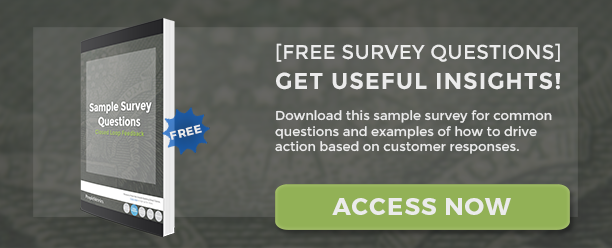1. Not getting executive buy-in:
Leadership at the organization has to buy-into and ideally sponsor the VoC program. VoC programs change the culture of an organization by putting the customer first and responding to customers who have poor experiences. If an executive is not sponsoring the program, the company will not pay attention to the data or invest in the right responses to the data and the initiative will not work.
2. Poor program design:
Many Voice of Customer (VoC) programs are not designed well. Meaning, the moments of truth are not carefully thought out, the touch points between your company and your customers that matter most are not identified, the questions that are asked customers are not done with the customer in mind and the results from the customer feedback are not carefully plotted to make sure the right person get the right information and moist important, can act on it. Design is also about making the feedback experience great for the customer. Long surveys that include very imaginable question to appease internal groups within the company are customer experience killers.

3. Not focusing on KPIs or Business Outcomes that you want to improve:
Many VoC programs begin without the end in mind. What are the key metrics you are looking to improve as a result of your VoC program? Is it to reduce churn? Increase sales? Retain Customers? Or is it to begin to track and improve NPS? Whatever those outcomes are, these should be tracked and measured against the data before and after the program. In fact, our perspective is that every company should have a clearly defined business outcome and each person within the organization should have a KPI assigned to them that they own and that they receive incentive compensation based on showing improved metrics. Examples of metrics that can improve include # of detractors, # of loops closed, number of open cases over 2 days, customer effort score, etc.
4. Not empowering the organization to act on customer feedback:
Another mistake is treating VoC like a market research study. VoC or CEM, is continuous feedback from customers either during or after an experience. As such, real-time customer feedback is available to the people who delivered that experience. So, these CX operators need to have the results of the customer feedback delivered to them in a way they can understand and in a manner that they can take action on the feedback … NOW! VoC programs that survey customers once a year or once a quarter and then have a big presentation where only executives view the results leaves a lot of money on the table. Don't let market research priorities get in the way of empowering your people to act on customer feedback.

5. Trying to do a sophisticated VoC program with free tools (a.k.a. SurveyMonkey):
Professional VoC programs are not cheap. As a result, we see folks who try to administer programs themselves using a tool like SurveyMonkey. The issue with that a VoC program impacts the experience of your customers and employees. SurveyMonkey was not designed for a VoC effort and the customer will feel that. As will employees. With freeware products you run the risk of asking for feedback and not being in position to respond to the individual in a timely fashion which we feel is worse than not asking for any feedback. Responding at an individual level is a core recommendation of PeopleMetrics.






%20(1).png)